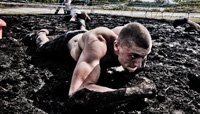In the military, the acronym SEAL stands for "Sea, Air, and Land." To civilians, the word has also become synonymous with the extreme level of fitness that characterizes elite military forces everywhere. SEAL training is the stuff of legend and has created a lasting influence on the fitness world, profoundly impacting everything from CrossFit to obstacle and adventure racing. SEALs are the ones called when it's time to take out Osama bin Laden or parachute under cover of night into the stronghold of a Somali warlord—assignments that bring them face-to-face with the world's most unsavory and dangerous bad guys. These operators must be ready for anything, and their preparedness includes insane levels of mental toughness and physical fitness.
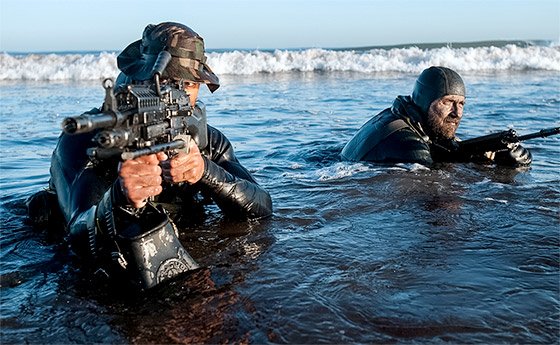
Even among this elite group, Mark Divine stood out, displaying a fitness level that earned him the nickname "Cyborg." All told, Divine served 9 years on active duty and 11 years as a reserve officer before retiring as a commander in 2011. He now devotes his energy to SEALFIT, a business that prepares aspiring SEALs for what lies ahead, as well as applying the same coaching to civilians who want more out of life and themselves.
I interviewed Divine about SEAL training and how its principles can help us all in our own daily fitness efforts. Here's what he had to say.
Q
Summarize the SEAL approach to fitness and what it means.
The SEAL approach to fitness is to be functionally fit and mentally tough so that you can stay in the fight for a long period of time and get the mission accomplished. It's not nearly as specific as a lot of sport athletics are—bodybuilding, for example. So we really are classic hybrid athletes who use an integrated approach to training. The six domains that SEALs focus on are:
- Strength, because strength makes us harder to kill, essentially, and more useful to our team.
- Stamina, because we end up having to do a lot of work and we can't be shut down by fatigue.
- Endurance, because we have to swim and hike long distances to get to a target.
- Work capacity, because we need to do a lot of work in a short period of time.
- Durability, because we don't peak for an event and then take a break; we need to stay in it for up to 20 years.
- Mental toughness, and we can't just hope to have it. We have specific tools and methods to develop mental toughness and emotional resiliency.
Mental toughness may be the most important quality of all, because as SEALs we are often pushed past our physical breaking point, where only the power of the mind can carry us across the finish line.
So everything, basically.
It's a very complete approach, because you're only as strong as your weakest link, and weak links can get you killed in our line of work.
But we don't focus much on doing things like agility drills or working on accuracy, coordination, and balance. Our sport-specific training is to go to the range and shoot. We'll run an obstacle course in our gear to get to a range and shoot, similar to what a pentathlete or biathlete would do. We do a lot of functional training, including weighted training with body armor or weight vests. We also train with field-expedient tools, like strongman stuff, just because we might go somewhere and not have access to a complete gym and barbells.
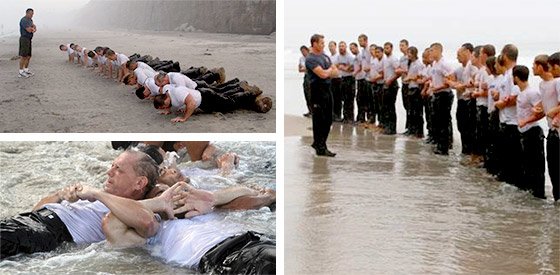
At the same time, we like to move load. There is a lot of weight training, and while some of our guys have done bodybuilding in the past, they're now much more focused on total fitness. We still have guys who do bodybuilding, but they have to be functionally fit as well. They're not likely to be pure bodybuilders. They don't have the time for it.
Basic Underwater Demolition/SEAL training, or BUD/S, is the weeding-out process that determines who has what it takes to become a SEAL and who does not. Tell me about that.
BUD/S is the indoctrination training for aspiring SEALs, most of whom fail—the attrition rate currently exceeds 80 percent. BUD/S instructors are masters at weeding out the weak of mind, spirit, and body.
The initial program lasts six months. That's followed by the four-month SEAL Qualification Training, where we ramp up the team training as well as the skill development. Sometimes there is a couple of weeks on top of that, but it will basically take 10 months to earn your trident, which is the Navy SEAL designation.
Is BUD/S the hardest training you've ever endured?
BUD/S was extremely challenging in a lot of ways, not the least of which was just the day in, day out grind. But when I joined the SEAL teams after BUD/S, there were times when the training was much harder than what I did in BUD/S. At this point, we were training for combat, so the risk level went way up, and we stepped up our game because our lives were on the line.
In BUD/S, we knew that the instructors couldn't kill us, at least not legally. But in the team on a real mission, there was no instructor. It was just us training ourselves for combat, and we were hell-bent on coming home alive. So the training was much more real and in more challenging environments: freezing cold temperatures high on a mountaintop, or underwater. Just crazy shit to simulate the worst conditions of combat.
Did combat present anything that exceeded what you had trained for?
Not for me, but for some guys it did, and they met the challenge because of their preparation. Combat, like a firefight, is usually over fairly quickly; it's rare for you to be engaged in a daylong firefight. I'm not saying it hasn't happened, but for the most part, it's intense, short, and terrifying, and you need to use everything you've got.
That's the way we train as well. It's just more real in a firefight. My buddy Glen Doherty, who was one of the two SEALs killed in Benghazi, fought for his life for eight hours or so. I can't even tell you what that would have been like.
Being a SEAL is the sum total of all your preparation—physically, mentally and emotionally—that goes into those missions. They take a lot out of you, but then you recover quickly and get up and do it again the next night. Platoons that were operating at the height of the Iraq and Afghanistan conflicts were sometimes doing two or three ops a night.
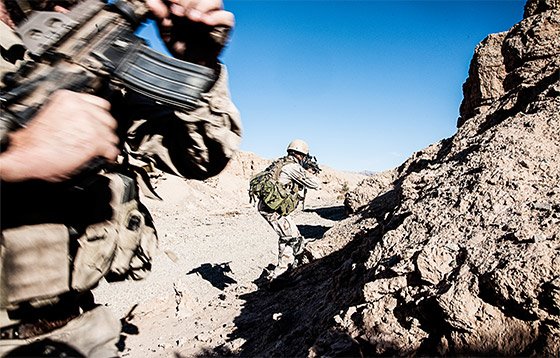
Is fear a useful emotion in extreme training or operations, or is it something that must be expunged from your psyche?
Fear has to be controlled, and to control it you have to understand it. I don't think it's possible to eradicate fear. I felt fear looking out the ramp before a parachute jump, even if it was my 300th. But I understood how to control it through my breathing and various mental control processes I had learned. I also understood that fear tricks our mind into blowing things out of proportion.
Sure, I was about to hurl myself off an airplane at night and fall 17,000 feet, so there was a reason that, psychologically and physiologically, I should experience fear. However, because of my training, I also rationally understood that my chances of catastrophic failure were very, very small, and that I had the training to handle it. The repetition of the training essentially transmuted that fear into a focused determination or concentration. The feeling was, "OK, I have this low-grade energy which I formerly related to fear, and what it's doing is making me super alert, and it's activating my sympathetic nervous system, which is good because I'm going to need that to get the job done."
Fear is controlled by having the courage to commit to the mission or task, then gaining the skills and tools to succeed. When you execute the mission, you will find that the original fear has been transmuted into focused confidence: "3, 2, 1...go! Let's get it on."
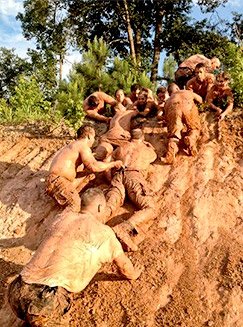
What are the advantages and the pitfalls of transitioning from such an intense world into civilian life?
In the SEALs, I also had an amazing team beside me and behind me. These were guys I would lay down my life for. Guys I could trust to do any task. Guys who had been vetted through a multiyear process. They were super-accountable, highly responsible, highly motivated individuals committed to self-mastery.
When I entered the civilian world and started my business, I brought that same level of expectation to my new teammates. That turned out to be a big mistake, as you can imagine. When the partnerships started to falter after a couple of years, I stepped back and realized we didn't do any team-building at all, and I didn't have any clue as to the character of these individuals. This was in direct contrast to the SEALs, where I deeply knew the character of all the people I worked with and could trust them with my life.
That's one of the reasons I created SEALFIT. SEALFIT isn't just a functional fitness program; it's a character development program. I use physical training methods to develop the character of a warrior: someone who is going to be mentally tough, emotionally resilient, and carry a strong team focus and a non-quitting spirit.
How did the decision to start SEALFIT come about?
When I got out of the SEALs and into the reserves, I needed to keep my body and mind fit because I could have gotten called up at any time. I'd train up to three times a day: running, swimming, yoga, CrossFit, strength training, you name it. I was juggling so many gym memberships that I finally thought, "Screw this. I'm going to start training myself and integrating the best of the different methods I've learned over the years." I have 25 years of experience in martial arts and 15 years in yoga, so I just started to pull together this integrated approach.
I had also already started a website called NavySEALs.com, where I mentored a lot of SEAL candidates who were hoping to enter the program and succeed. In 2006, the Navy recruiting command hired me to launch a nationwide mentoring program for the SEALs. So we hired 35 former SEALs to go out into the different recruiting districts nationwide to serve as a point of contact for all the recruits.
In 2007, I launched the SEALFIT training center in Encinitas, California, and I affiliated it with CrossFit. I began something called SEALFIT Challenge Camp, now called Kokoro Camp. We were getting our guys through SEAL training at more than a 90 percent success rate. Some civilians asked me, "Hey, that looks really interesting, are you just training spec ops candidates?" So I created a separate track for civilians.
SEALFIT Leave Common to Someone Else
Watch The Video - 2:41
Over time, we developed programs with varying degrees of depth and difficulty which are open to anyone looking to fully maximize their performance. Today, two-thirds of our clientele are extreme athletes, endurance athletes, and obstacle and adventure racers. These types of folks come from all walks of life and all ages, men and women.
You don't have to have the physical strength of a SEAL to be an incredibly powerful person and get the job done. So everyone has their own unique experience and we constantly hear that the experience stays with them for the rest of their life. All of a sudden,they approach a challenge at work and they can reflect back to what they learned about themselves at Kokoro and then—boom—it's easy for them. They get through it no problem. They have developed the skills to really accelerate their growth and their performance.
Tell us more about the overlap between CrossFit and special ops training.
The very first athletes in CrossFit were ex-Navy SEALs. The director of training at CrossFit is a former SEAL. A SEAL owned the first affiliate in CrossFit. The SEALs have been doing CrossFit-style since long before it was CrossFit.
Essentially, SEALs were doing functional high-intensity interval training, combined with a ton of endurance and durability work, well before [CrossFit, Inc. cofounder] Coach [Greg] Glassman put together the very effective CrossFit program. CrossFit leverages the same style of training but adds the movements of Olympic lifting and gymnastics into the mix. We were doing bodyweight variants of popular CrossFit workouts such as "Cindy" before anyone else even understood what they were.
SEALFIT Fran WOD - SEALFIT Academy
Watch The Video - 3:19
On the race side, we had all run the original Marine mud race at Camp Pendleton long before a Tough Mudder came along. Warrior athletes tend to be early adopters, and search for what works. We found that combining elements of moving a weighted load with body weight gymnastics movements and sprints through the obstacle course or to the ocean was really effective. With functional fitness, the more realistic you can make the training, the more effective it's going to be.
A lot of operators who left the SEALs gravitated to CrossFit to be affiliate gym owners. And then along came Tough Mudder, Spartan Race, etc. and we said "Cool, now we can still do the O-course." So the former and current operators started lining up to do CrossFit, Tough Mudder and the Spartan race, and are their biggest cheerleaders to this day.
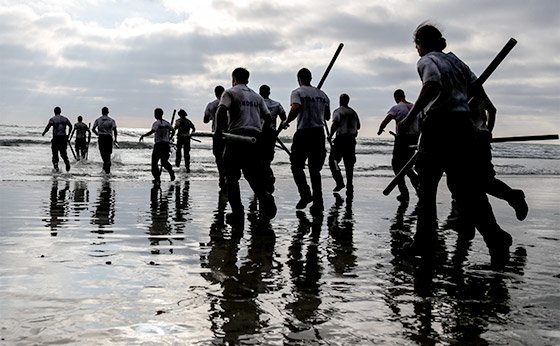
A typical Bodybuilding.com reader trains pretty intensely four or five times a week and juggles that with a job, maybe a family too. They're not going on any covert missions anytime soon. What can that person learn from SEAL training?
Along with the mental training, what we really do is take your physical training up another notch as well as develop greater focus, concentration, awareness, communication and team effectiveness. Essentially, you're performing at a higher level in your job and with your family. Our approach and intention isn't just to make you bigger, faster and stronger. It's to make you more effective as a human being in whatever you're doing.
You can't control outcomes in life, but you can give yourself the greatest odds of success through proper preparation. Your chances of achieving a critical goal or objective—or "target," as we SEALs like to say—is far more probable with the skills and qualities we teach and train.
Recommended For You

Fitness 911: 6 Super-Fit Men And Women Who Serve And Protect
For these six men and women, fitness is a calling, a lifestyle, a sport, and a survival strategy. Learn from people who risk their lives to protect ours.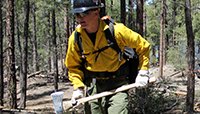
Fight Fire With Fitness: Follow The ''Hotshot'' Workout!
There's no tougher foe than a raging wildfire. Load up your pack, gain some elevation, and try the workout favored by the ''Hotshots!''